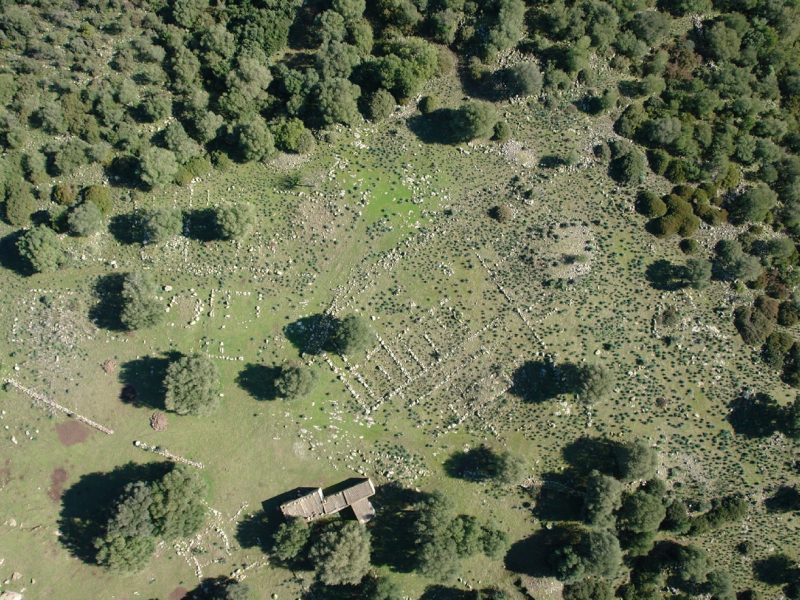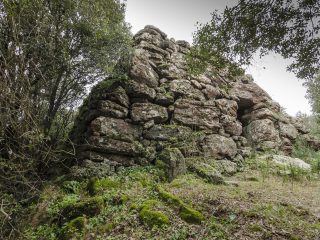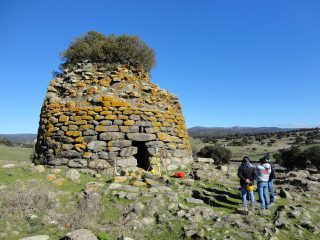The site extends across a hillside with a flat summit, a delightful natural context characterised by the presence of numerous hundred-year-old wild olive trees. There are signs of human presence from the fourth millennium B.C. up to the eighth century A.D.
Neolithic tombs (domus de janas) were carved out along the southern slopes and were re-used in later periods. There was a Nuragic compound on the summit which was then incorporated into a later settlement during the Phoenician-Punic era founded between the second half and the end of the VII century B.C.
Only the foundations remain of the settlement. An acropolis, a residential area of homes and a sanctuary can currently be identified. The whole area was surrounded by a double defence wall which hemmed in the summit of the small plateau, encompassing several buildings, most likely residential ones, and which also included the imposing Nuraghe Diana. There was an additional line of defence at the foot of the elevation. On the south-western side, the shaft tombs in the Phoenician necropolis can be spotted, while the Punic necropolis, with its burial chambers, stood on the opposite side.
It is freely accessible, but it is advisable to make use of a guided tour, asking at the ticket office of the Santadi Archaeological Museum. It is also advisable to wear training or trekking shoes.
Follow the trunk road SS 293 towards Santadi, then turn left at km 62 onto a local road. Follow this for 1.5 km until you reach the entrance to the archaeological site.





















